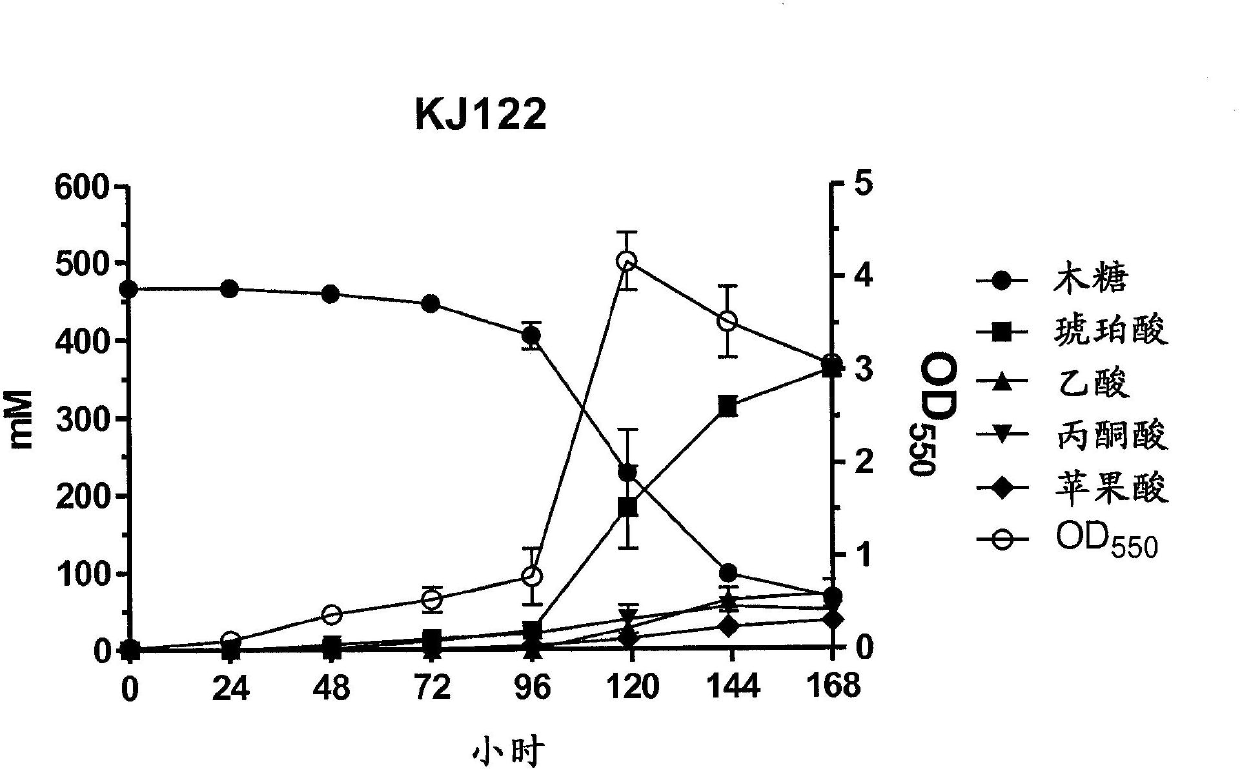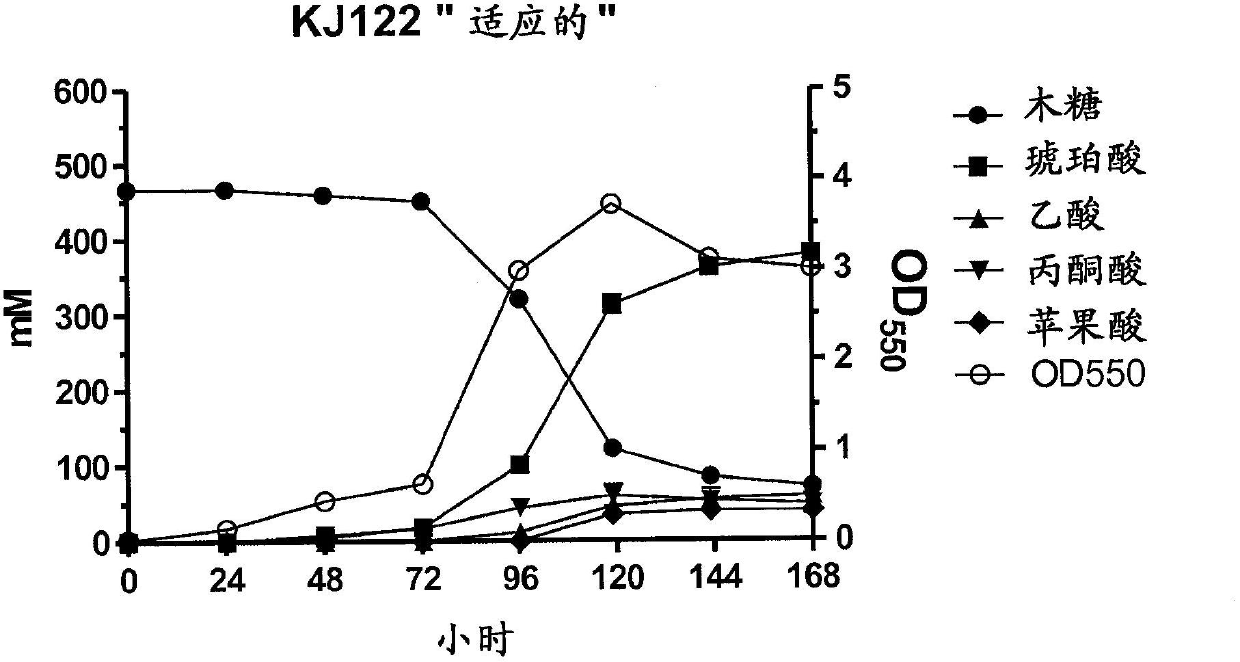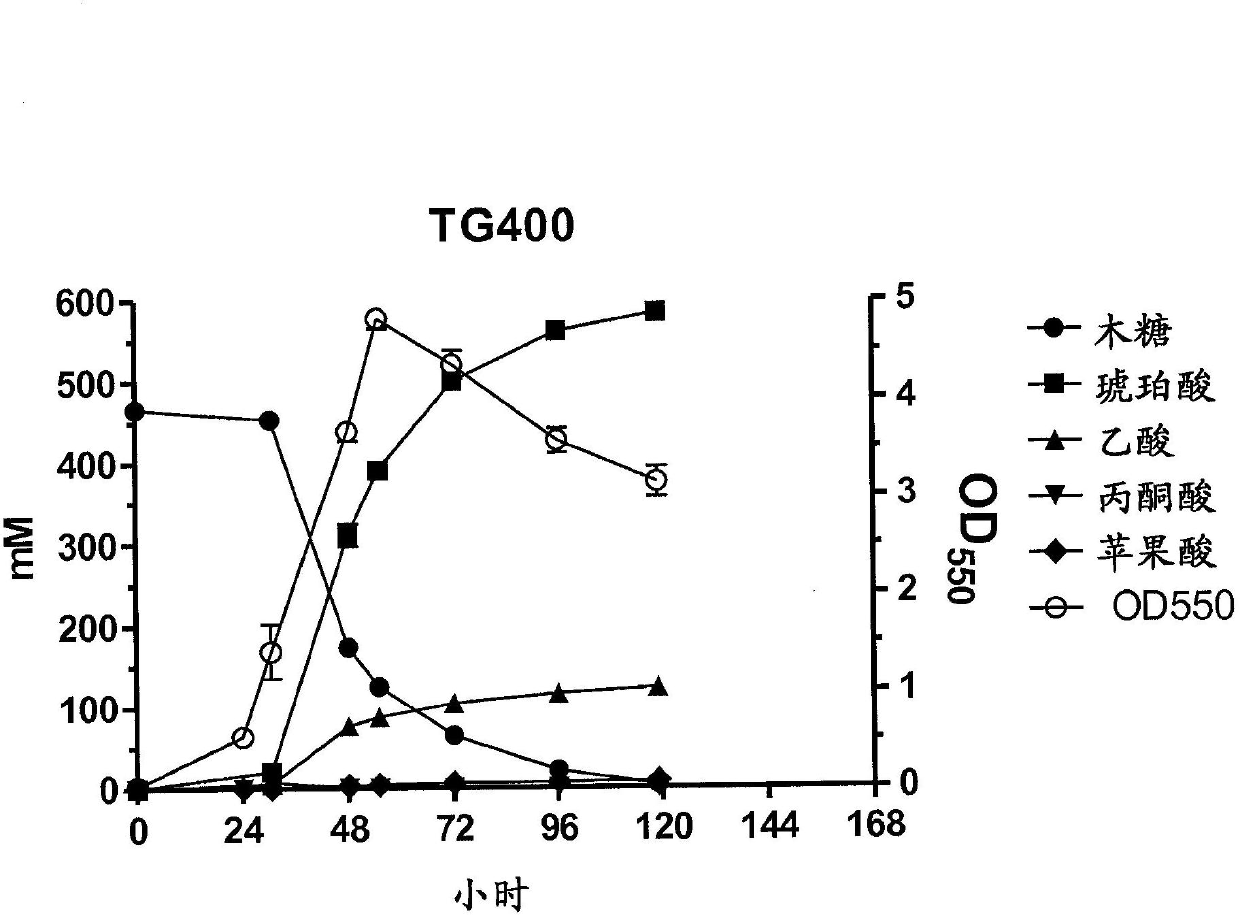Metabolic evolution of escherchia coli strains that produce organic acids
A technology of Escherichia coli and Bacillus, applied in the field of metabolic evolution of Escherichia coli strains producing organic acids, can solve problems such as reducing growth rate
- Summary
- Abstract
- Description
- Claims
- Application Information
AI Technical Summary
Problems solved by technology
Method used
Image
Examples
Embodiment 1C5
[0099] Embodiment 1C5 utilizes
[0100] E. coli strain KJ122 (E. coli C, ΔldhA, ΔadhE, ΔackA, ΔfocA-pflB, ΔmgsA, ΔpoxB, ΔtdcDE, ΔcitF, ΔaspC, ΔsfcA) was able to grow aerobically on glucose, xylose and arabinose. The purpose of the present invention is to aerobically cultivate Escherichia coli KJ122 strain in a medium containing hexoses and other pentoses and to select organisms that can simultaneously utilize two types of sugars.
[0101] Initial screens for C5 utilization were performed by aerobic incubation on NBS inorganic media plates supplemented with 2% xylose. Plates were incubated overnight at 37°C. Colonies appearing on xylose plates were streaked three times consecutively on fresh plates. At the end of the third transfer on solid NBS inorganic medium with 2% xylose, cells from the plate were scraped off and inoculated directly into fermentation flasks containing 3 , 1 mM betaine and 8% xylose in AM1 inorganic medium. Fermentation medium with 1.2N KOH and 2.4M K ...
Embodiment 2
[0104] Metabolic evolution of embodiment 2 KJ122
[0105] In another embodiment of the invention, the KJ122 strain has undergone metabolic evolution. Micro-aerobically grown KJ122 cultures in liquid AM1 medium supplemented with xylose were transferred every 24 hours to fresh liquid AM1 medium containing 8% xylose for a period of 2 weeks. At the end of these multiple transfers, the KJ122 strain was transferred to a new fermenter with AM1 medium supplemented with 8% xylose. The anaerobic growth rate and kinetics of succinate production and xylose utilization of KJ122 in the fermentor were monitored. The succinic acid production in the fermentor started immediately without any lag period and also produced a higher final titer, and this strain was termed the "metabolically evolved strain". In our strain collection, this metabolically evolved strain has been named TG400.
[0106] To determine whether the KJ122 "adapted strain" and the "metabolically evolved" TG400 strain have an...
Embodiment 3C5
[0109] Example 3C5+C6 co-fermentation
[0110] In KJ122 under anaerobic growth conditions, C5 sugars and C6 sugars were not metabolized simultaneously. C6 sugars are usually metabolized first and show a lag period before C5 metabolism. Therefore, it was important to determine the fermentation characteristics of TG400 in the presence of equal amounts of C6 and C5 sugars. like Figure 4 As shown in , TG400 was able to utilize glucose and xylose at the same rate and produce succinate without any lag period. KJ122 is also able to utilize xylose and glucose. In the KJ122 strain, however, xylose utilization started only after a large drop in glucose concentration. As further shown in Table 3, when compared to KJ122's utilization of xylose and glucose, TG400 utilized more xylose than glucose on a molar basis.
PUM
| Property | Measurement | Unit |
|---|---|---|
| time | aaaaa | aaaaa |
| composition ratio | aaaaa | aaaaa |
| composition ratio | aaaaa | aaaaa |
Abstract
Description
Claims
Application Information
 Login to View More
Login to View More - R&D
- Intellectual Property
- Life Sciences
- Materials
- Tech Scout
- Unparalleled Data Quality
- Higher Quality Content
- 60% Fewer Hallucinations
Browse by: Latest US Patents, China's latest patents, Technical Efficacy Thesaurus, Application Domain, Technology Topic, Popular Technical Reports.
© 2025 PatSnap. All rights reserved.Legal|Privacy policy|Modern Slavery Act Transparency Statement|Sitemap|About US| Contact US: help@patsnap.com



